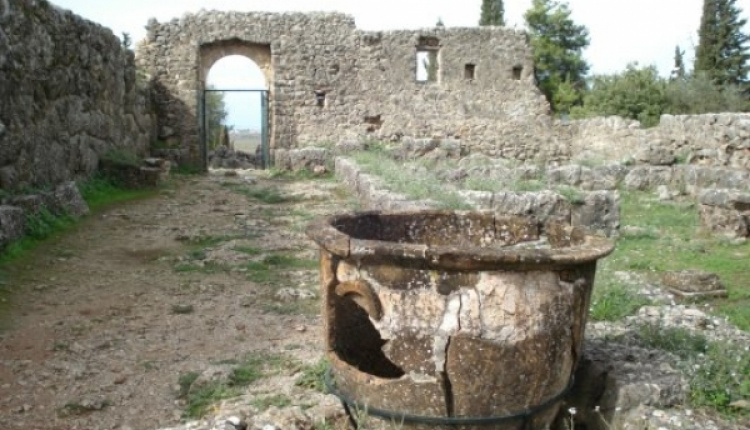Nekromanteio at the River Acheron
- by XpatAthens
- Wednesday, 18 February 2015

Within a short distance of Parga (about 25 minutes) lie the ancient ruins of the Nekromanteio of Acheron. It is a little known archaeological site in Greece and it is located in the province of Epirus. I visited Nekromanteio when I was a child and the location and mythology of the place stuck with me for life. I always wanted to return, and I finally made the journey one recent summer with my sister Vivi.
Nekromanteio is a small archaeological site, easily navigated in one or two hours. I wandered through the rooms and storage areas before entering the long corridor where in ancient times so many must have walked trembling in anticipation of an encounter with the dead. Of the three arched gates in the labyrinth two survive in good condition and the labyrinth with its massive walls is still an imposing structure. Imagining the path of the ancients, I walked through the third door into the main hall where the hallucinating pilgrims believed in the encounter with the underworld inhabitants.
Through a small hole on the floor of the main hall I descended a steep metal staircase down into the dark crypt that was the palace of Persephoni and Hades. The passage even today appears ominous--like the descent to the underworld should feel-- and the room is stunning in the contradiction of its irregular rocky floor and the perfectly masoned stone arches that soar overhead. The crypt was probably carved out of the live rock in the same place where an ancient cave may have started the cult.
Above this, the passage to the underworld of a pagan cult, in later times a Christian church was built that crowns the ancient stones. It stands as a silent witness to the long history of the land that manifests itself on strata of symbolic monuments to conflicting ideologies.
Nekromanteio is not as well known as the other oracles of Greece, but well worth a visit for its charm and the fascinating cult that made it all possible. I enjoyed my walk through the ruins as I tried to imagine the gamut of feelings that an ancient believer must have experienced on his/her way to meet the dead with shaking knees and a spinning head.
I didn't fear, nor believed, but driving away I smiled and secretly adored the fact that I had just descended and escaped from the dwelling of Hades himself; a feat reserved for the bravest of men: Orpheus who went for love, Hercules who went for the three-headed dog, and Odysseus who went for the future to be told.
Source: Greek Landscapes



